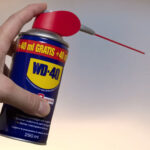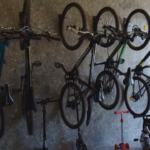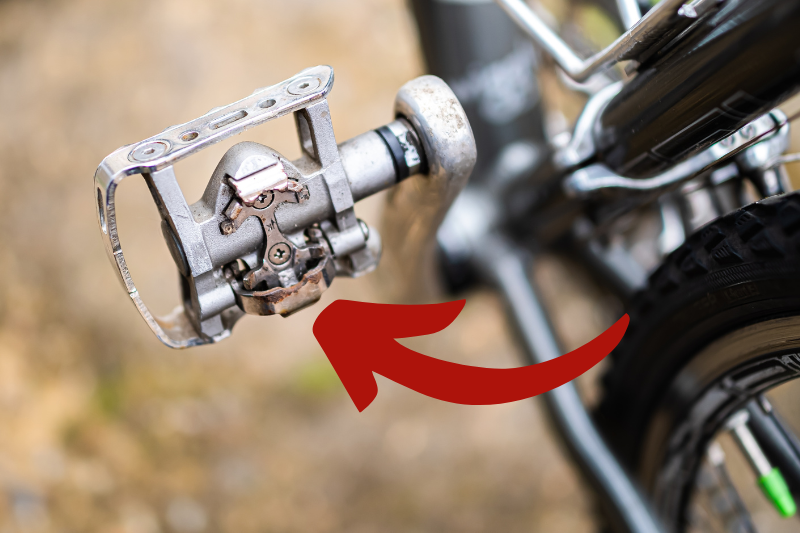
Inflating road bike tires might seem like a simple task, yet it plays a critical role in your bike’s performance, safety, and overall ride quality.
Today, I will walk you through this process to ensure your next ride is smooth and enjoyable.
Key Takeaways
- Maintaining proper tire pressure enhances ride quality, safety, and bike performance.
- Know your valve type (Presta or Schrader) and choose the appropriate pump and valve adapter.
- Regularly check tire pressure to adapt to riding conditions and prevent wear.
- Use a quality pump with an accurate gauge for consistent tire inflation.
The Importance of Proper Tire Inflation
Maintaining the right tire pressure isn’t just about avoiding flats. It significantly influences your ride quality, grip on the road, and bike handling.
Correctly inflated tires reduce the risk of punctures, provide better comfort, and ensure you’re rolling efficiently.
It’s a balance; too low pressure can lead to pinch flats and rim damage, while too high pressure can make for a rough ride and decreased traction.
With that said, pause, put the lock on your bike, and take a few minutes to read this guide, as we have some highly valuable info for you.
Valve Types
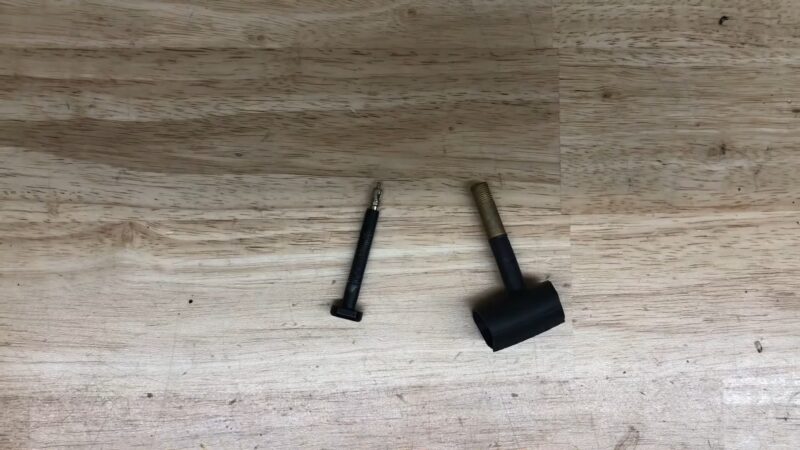
Your bike’s tires can have one of two valve types: Presta or Schrader. Presta valves, often found on road bikes, are slim and long, featuring a locking nut at the top to seal the valve.
They’re known for their ability to maintain air pressure effectively. Schrader valves, similar to those on car tires, are shorter and wider, equipped with a spring mechanism inside the valve.
| Valve Type | Description | Features |
| Presta | Slim, long, with a locking nut | Less likely to leak, common on road bikes |
| Schrader | Short, wide, with a spring mechanism | Sturdy, easy to use |
Step 1: Determine the Recommended Tire Pressure
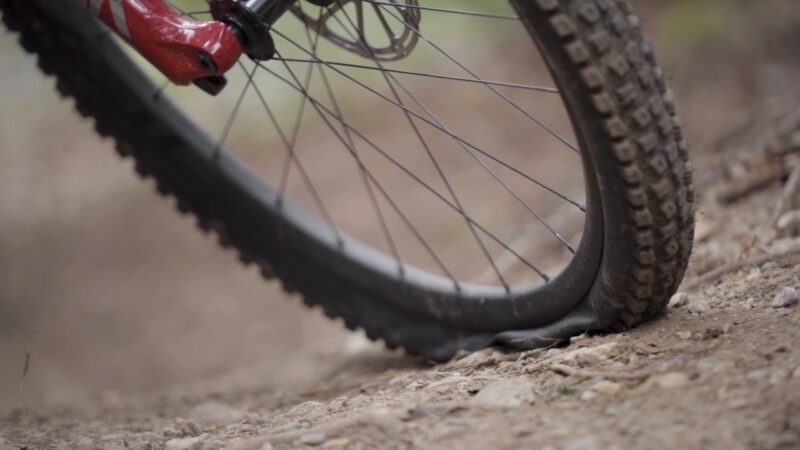
Finding the optimal PSI (pounds per square inch) for your tires involves checking the manufacturer’s specifications, considering your riding conditions, and factoring in personal preference. The sidewall of your tire usually lists the recommended PSI range.
- Benefits of the Right PSI: Ensures a smooth ride, optimal grip, and reduces wear.
- Under-inflation Risks: Increases the chance of punctures and damage.
- Over-inflation Risks: Leads to a harsher ride and less traction.
Common PSI Values:
- Light riders on smooth roads: Towards the lower end of the recommended PSI.
- Heavier riders or rough roads: Higher within the recommended PSI range.
Step 2: Choose the Right Pump and Valve Adapter
Selecting the correct pump and, if necessary, a valve adapter is crucial for efficient tire inflation.
Types of Pumps
- Floor Pumps: Best for home use, offering high capacity and efficiency.
- Hand Pumps: Portable, though require more effort.
- CO2 Inflators: Quick inflation solution but not for regular use as CO2 leaks over time.
Pumping Tips

- Selecting the Right Pump Head: Match your pump head or adapter to your valve type.
- Attachment: Attach the pump head firmly to the valve to prevent air loss.
Step 3: Inflate the Tire to the Desired Pressure
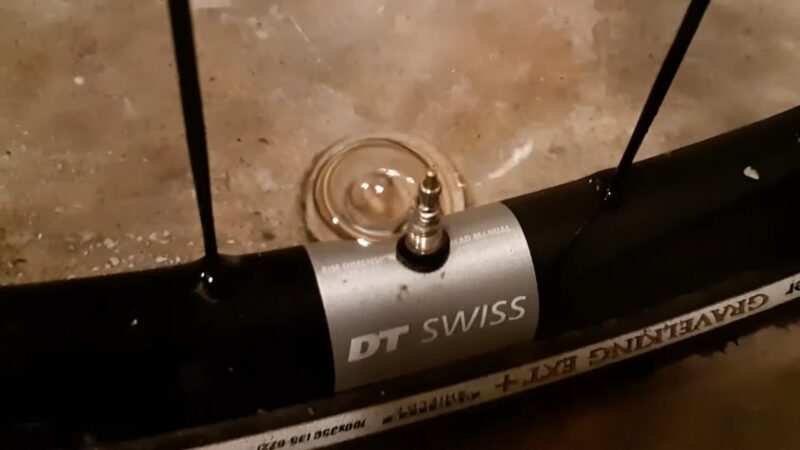
Using your pump’s gauge, inflate the tire gradually to the desired PSI. It’s essential to avoid over-pumping, which can stress the tire and valve.
- Checking for Leaks: Inspect the tire and rim for any signs of leaks, bulges, or cracks.
- Adjusting Pressure: If over-inflated, release some air to reach the optimal level.
Summarizing the Benefits
Properly inflated tires offer a blend of efficiency, safety, and comfort. By following these steps, you can ensure your bike performs at its best.
Maintenance and Troubleshooting Tips
- Regular Inspection: Check your tires for wear and pressure loss regularly.
- Tire Rotation: Periodically rotate your tires to even out wear.
- Using Tire Sealant: Can help prevent punctures.
- Carrying a Repair Kit: Always be prepared for flats.
Why Regular Checks Matter
Tires naturally lose air over time, even without any apparent punctures. Factors such as temperature changes can affect tire pressure. A tire that was perfectly inflated last week might be slightly under-inflated today.
That’s why making tire pressure checks a part of your pre-ride routine is wise. It ensures you’re always riding with optimal tire performance, safety, and efficiency.
How to Tell If You’re Riding on Properly Inflated Tires
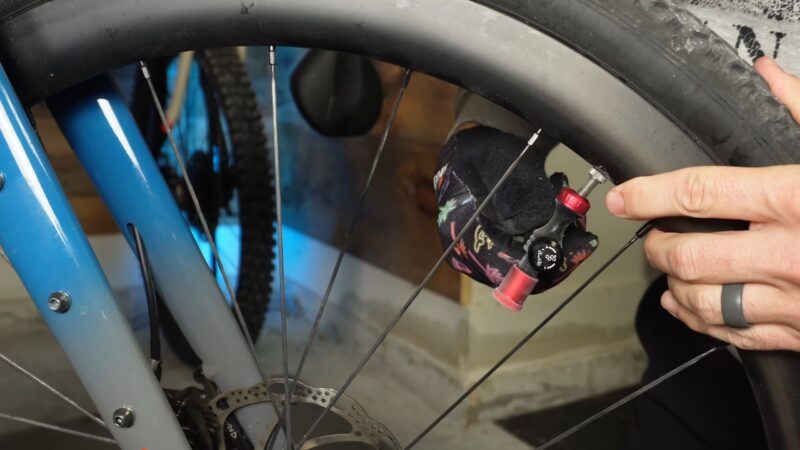
While gauges provide a numerical PSI value, getting a feel for how properly inflated tires should look and feel on your bike is also helpful.
A tire inflated within its recommended PSI range will compress slightly under weight but shouldn’t feel squishy or look visibly under-inflated.
Conversely, a tire shouldn’t feel rock-hard to the touch; there should be a slight give that indicates the tire can absorb some of the road’s roughness, contributing to a smoother ride.
Dealing with Flats on the Go
Even with meticulous maintenance, flats can happen. Carrying a mini pump or CO2 inflator, along with a spare tube or patch kit, ensures you’re not stranded.
Knowing how to change a tire or patch a tube is an invaluable skill for any cyclist. Practice at home so you’re confident in doing it roadside if the need arises.
Seasonal Adjustments
Your tire pressure needs can change with the seasons. In wetter months or if you’re riding on slick surfaces, running your tires at the lower end of the recommended PSI range can provide better traction.
Conversely, in dry conditions or on smooth tarmac, the higher end might offer better performance and efficiency.
The Role of Tire Pressure in Bike Handling
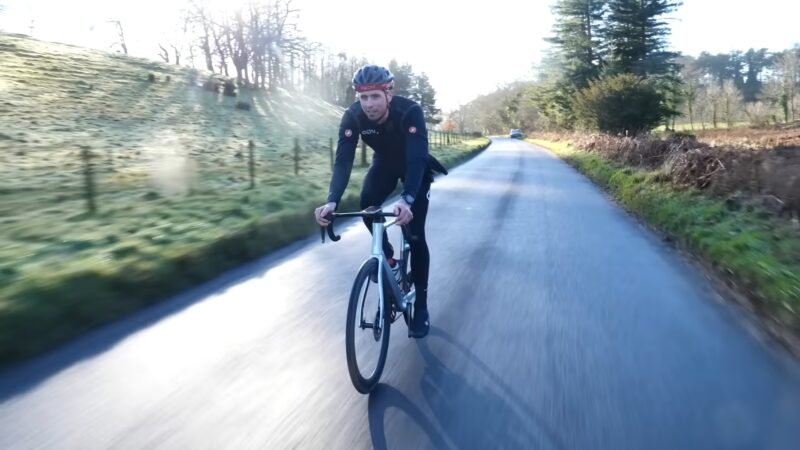
Proper tire pressure doesn’t just affect the ride quality, as it plays a significant role in how your bike handles. Correctly inflated tires can mean the difference between a bike that feels responsive and easy to control and one that feels sluggish or overly twitchy.
For instance, on a road bike, higher pressure can lead to faster speeds on smooth surfaces, but slightly lower pressure might provide better control and comfort on mixed surfaces without significantly sacrificing speed.
When to Adjust Tire Pressure
Adjusting tire pressure isn’t just about sticking to a single number. It’s about adapting to the conditions. For example, if you’re planning a long ride on a particularly hot day, remember that air expands with heat.
Starting out with a slightly lower PSI than usual can prevent your tires from becoming over-inflated as temperatures rise. Similarly, if you’re carrying extra weight, such as a loaded backpack for a long ride, a slight increase in tire pressure can help accommodate the added load.
FAQs
Can I use a car tire pump on my road bike?
Yes, but only if the pump fits your bike’s valve type (Presta or Schrader) and you can accurately control the pressure to avoid over-inflation.
How often should I check my bike tire pressure?
It’s best to check before every ride, as even a day can make a difference, especially if your bike has been sitting unused.
What’s the quickest way to deflate a tire if I’ve over-inflated it?
For Presta valves, unscrew the nut at the top and press down on the valve to release air. For Schrader valves, use a small tool or the edge of your pump’s valve adaptor to press the pin inside the valve.
Can temperature affect my tire pressure?
Yes, air expands in heat and contracts in cold. Your tires may lose pressure in cold weather and gain pressure in hot weather.
Is it possible to over-inflate tires with a CO2 inflator?
Yes, because CO2 inflators deliver air quickly, it’s easy to over-inflate if you’re not careful. Always use a pressure gauge to check.
Do I need to replace my bike tires after a certain number of inflations?
No, tire replacement depends on wear and damage, not the number of times they’ve been inflated. Regularly inspect your tires for signs of wear, such as cuts, cracks, or bald spots.
Final Words
Inflating your road bike tires correctly can transform your riding experience. With a bit of practice, this simple maintenance task will become second nature. Enjoy the ride, knowing your bike is in top condition.
Follow these guidelines, you’re not just preparing for a ride; you’re ensuring each journey is as smooth and safe as possible. Whether you’re a seasoned cyclist or just starting, mastering tire inflation is a step towards better biking.
Related Posts:
- Can You Put Pegs On A Mountain Bike? Step By Step Explained
- Are Recumbent Bikes Faster Than Upright Road Bikes?
- Do 700c Bike Tires Fit 29ers (Are They the Same?)
- Can Bike Tires Go Flat Just From Sitting Unused? (Explained)
- Do Bicycle Tires Expire or Go Bad? (Shelf Life Explained)
- How to Reset Bike Lock - Follow These Easy Steps






